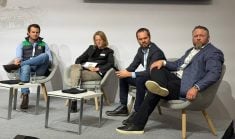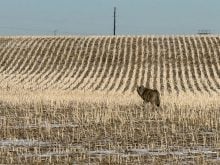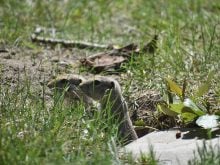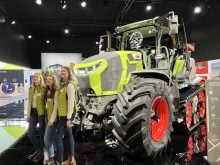HAGUE, Sask. – Len Hankins pulls a frozen Ziplock bag from a two-metre long freezer. The litre of frozen yellow liquid he holds sells in the city for $2. Each of his 32 milking sheep produce 3.25 litres every day during the 180 day milking season.
“Establishing a sheep dairy has been a lot of work, but it pays its own way and we think it will soon be quite profitable. And we didn’t need to buy a quota to get into dairying,” said Hankins.
He and his wife Lana and their two daughters converted 40 acres of an 80-acre parcel of land near Saskatoon from a rural acreage to a sheep dairy in two years.
Read Also
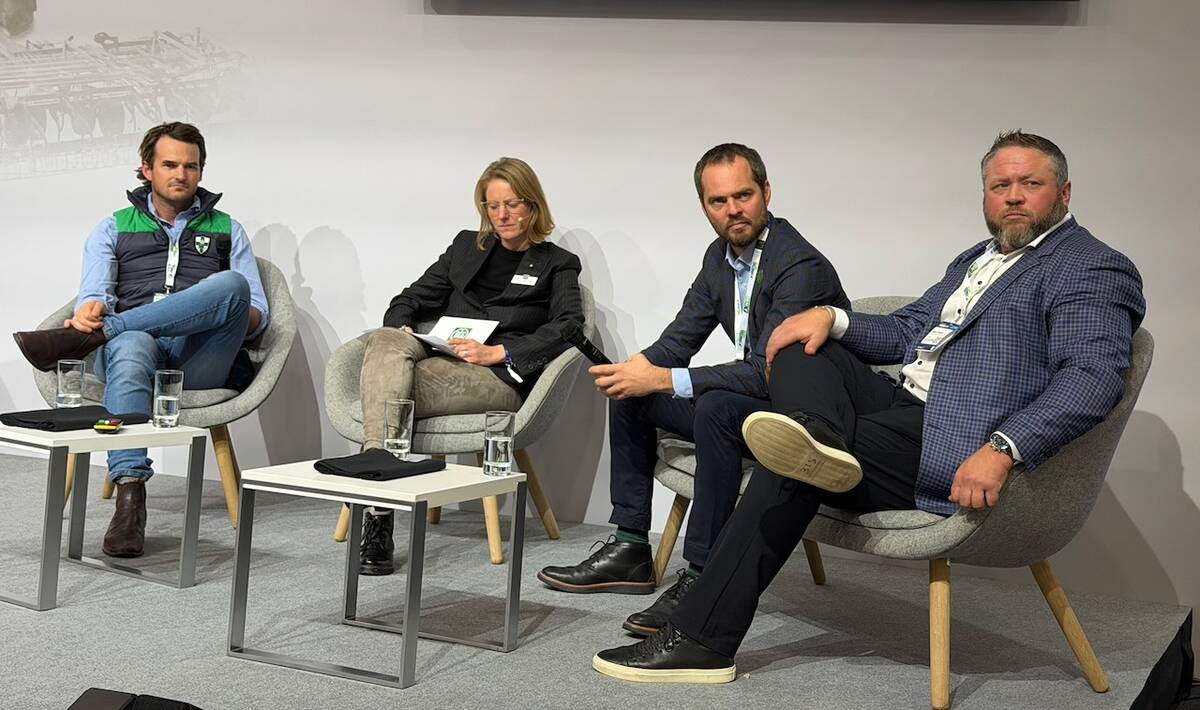
Agritechnica Day 2: The future of tractor power, building quicker crop apps and large farms and tech
Agritechnica Day 2: The future of tractor power, building quicker crop apps with Syngenta and large farms and tech
“We lease a half section of hayland to provide feed for the herd and with the 40 acres we should be able to handle a milking herd of 80 to 90 sheep without any difficulty,” he said.
When the Hankins’ began their dairy two years ago, they weren’t sure how the public would accept sheep’s milk. They heard many people allergic to cow or goat milk could drink the sheep product. As well, they were located within a half hour’s drive of a mid-sized urban centre so a market was available. But they never suspected demand would outstrip the farm’s production.
“We put up signs in health food stores and markets and with word of mouth from our first customers we can sell all we milk,” said Hankins.
The couple got the idea after reading an article about a sheep dairy in Alberta.
“We phoned him a couple of times and he agreed to talk to us about it. After seeing his operation we decided this would be the business for us,” said Hankins.
What the couple didn’t realize was the challenge of finding stock. Most sheep are raised for meat and wool. The Hankins needed animals suited to high quality milk production. East Friesians are a German breed known for high volume milk production and excellent reproductive rates, 2.5 lambs per ewe.
“We found out right away that high percentage East Friesians were not easy to come by and were quite expensive. I guess (the dairy farmer from Alberta) felt sorry for us or something and he finally sold us a ram and six ewes,” said Hankins.
The couple ordered a purebred ram at the same time they bought the first animals. Demand is so great they expect to receive their new herd sire next month, two years after it was ordered.
The family has built their herd from the original seven animals to 143, including a milking herd of 31 animals with 97 ewes and some rams.
The male lambs not kept or sold for breeding animals are sold as lamb or mutton.
The bloodlines of the herd are now 57 to 78 percent East Friesian. The couple plans to raise the whole herd to 78 percent or better in coming generations.
“The breeding stock, wool and the meat are profitable and the dairy side of it breaks even so far. We plan to have about 80 milking next year and then the milk side of the business will be quite profitable on its own.”
Hankins built his own milking parlor from steel and plywood. The couple had a tough time outfitting the dairy with the proper equipment. The internet proved the best source for used dairy equipment, such as a soon-to-be installed 160 litre pasteurizer, an upgrade from the 10 litre machine they now have.
A modified milking machine with two suction lines removed to accommodate two teats instead of four is used for milking. Other plans include a pipeline to a central milk collection tank because the two stainless steel pots now used will be too small for 80 animals.
“Each animal takes 45 seconds to a minute to milk,” Hankins said.
The couple also plans to try ice cream next year, and then cheese.
Hankins pointed to the strong market for cheese in the United States. According to a U.S. Department of Agriculture study, 25 million kilograms of sheep cheese were imported in 1996, mainly from Europe, at a value of $118 million (U.S.) Hankins said sheep dairies are also selling to restaurants, a market he and Lana plan to explore.


